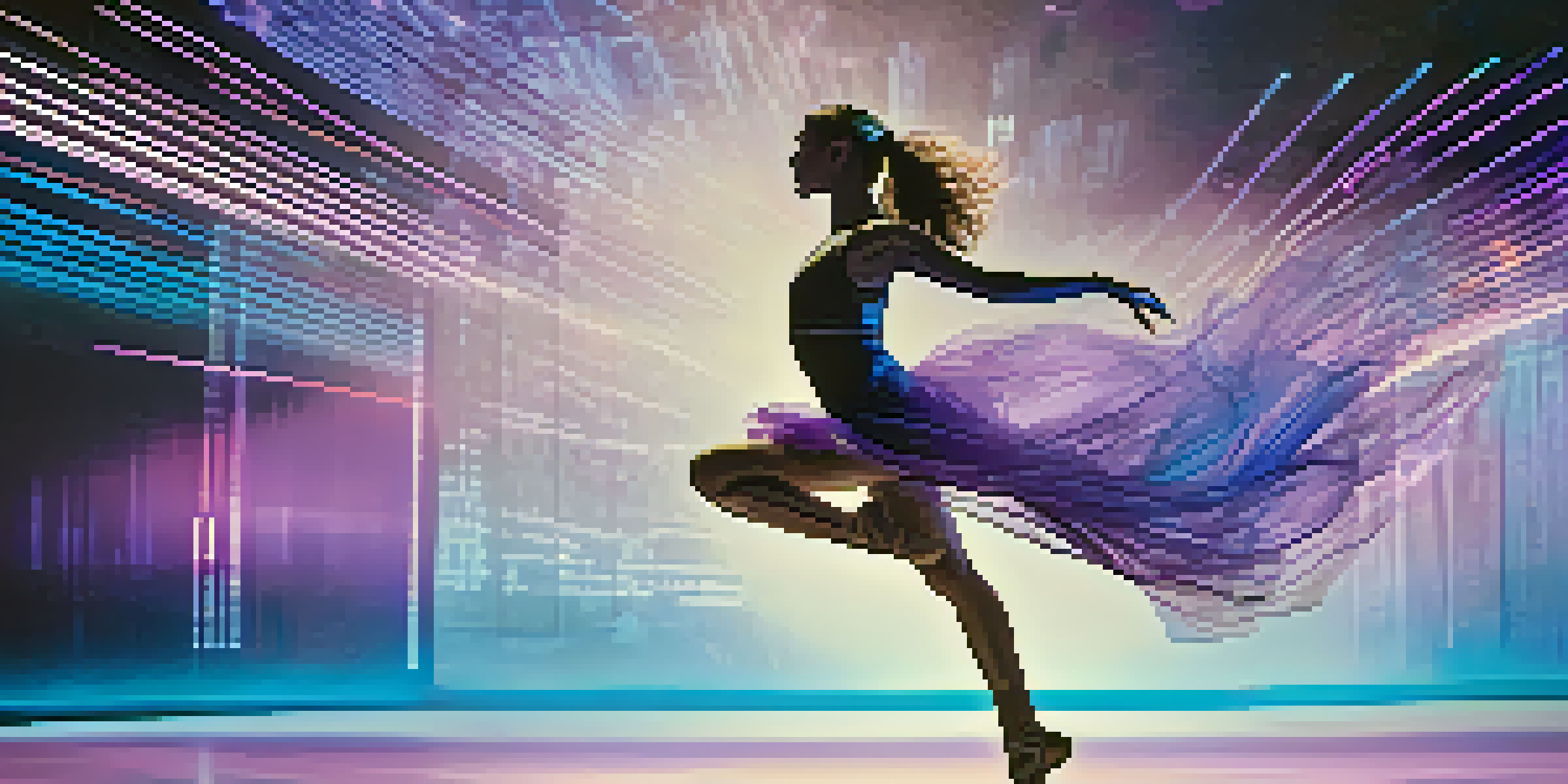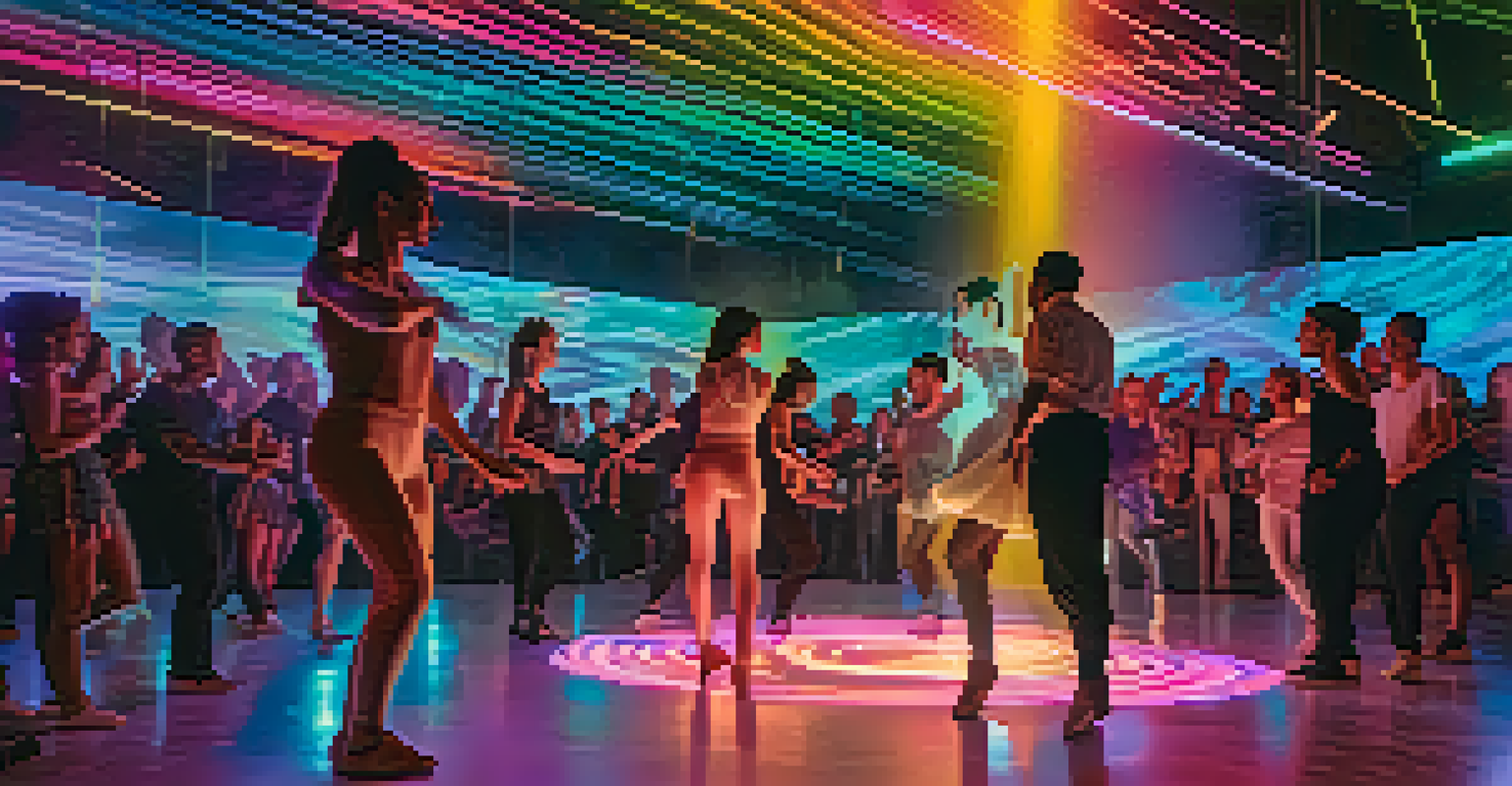Dance Meets Data: Enhancing Performances with Analytics

The Intersection of Dance and Technology
In today’s fast-paced world, technology is reshaping art forms, and dance is no exception. Dancers are now using various tools to enhance their performances, making choreography more innovative and engaging. As we explore this intersection, it becomes clear that data analytics plays a pivotal role in understanding movement and audience engagement.
Technology is best when it brings people together.
Imagine a dancer using sensors to capture their movements in real-time. This data can be analyzed to improve technique and even inform choreography. It’s a fascinating blend of creativity and technology that opens new doors for artistic expression and performance optimization.
As we delve deeper, we’ll see how harnessing data can help dancers connect with their audience on a more profound level. It's not just about the moves; it's about understanding how those moves resonate with viewers, creating a more immersive experience.
Understanding Performance Metrics
Performance metrics are essential in evaluating how dancers perform. By measuring aspects such as timing, speed, and precision, choreographers can gain insights into both individual and group performances. This approach helps identify strengths and areas for improvement, ultimately enhancing the overall quality of the dance.

For example, consider a ballet company analyzing the timing of their dancers during a complex routine. By using data to pinpoint where dancers excel and where they struggle, the choreographer can tailor rehearsals to focus on those specific elements. It’s a strategic way to elevate the performance while fostering growth.
Data Enhances Dance Performances
Technology, particularly data analytics, plays a critical role in improving dancer techniques and audience engagement.
Moreover, these metrics can serve as a feedback loop, where dancers can visually see their progress. This not only boosts their confidence but also encourages a culture of continuous improvement, a vital aspect of any artistic discipline.
Audience Engagement Through Analytics
Data analytics isn't just for dancers; it also plays a crucial role in understanding audience engagement. By analyzing ticket sales, social media interactions, and audience feedback, companies can gain valuable insights into what resonates with viewers. This information helps in crafting performances that truly captivate the audience.
Art is the most beautiful of all lies; it is a lie that reveals the truth.
Imagine a dance troupe reviewing social media comments and engagement statistics after a show. They discover that certain themes or styles received more positive feedback. This insight allows them to refine their future performances, aligning them more closely with audience preferences.
Ultimately, the goal is to create a shared experience that leaves a lasting impression. By leveraging data, dance companies can foster a deeper connection with their audience, ensuring that each performance is not just seen but truly felt.
Personalizing Dance Training Programs
Just as data can enhance performances, it can also revolutionize training programs for dancers. Personalization is key to efficient training, and analytics allows instructors to tailor programs to meet individual needs. This ensures that each dancer is honing their skills in the most effective way possible.
For instance, a dance school might utilize data to track a student's progress over time. By identifying specific challenges, instructors can modify their teaching techniques and focus on areas that require more attention. This tailored approach can significantly accelerate the learning process and boost confidence.
Personalized Training Programs
Data allows for tailored training programs that meet individual dancer needs, accelerating skill development and boosting confidence.
Furthermore, personalized training not only helps dancers improve but also enhances their overall enjoyment of the craft. When students feel supported and see clear progress, their passion for dance often deepens, creating a vibrant learning environment.
Choreography Driven by Data Insights
Choreographers are increasingly using data insights to inform their creative processes. By analyzing movement patterns and audience reactions, they can create pieces that are not only innovative but also resonate deeply with viewers. This data-driven approach adds a new layer to the artistic process, bridging the gap between art and science.
For example, a choreographer might use video analysis to study how different formations affect audience engagement. By understanding which movements capture attention, they can craft routines that maximize emotional impact. It’s a powerful way to ensure that the choreography is not just beautiful but also meaningful.
This synergy of data and creativity opens up exciting possibilities for dancers and choreographers alike. It encourages a collaborative atmosphere where artistic intuition is supported by analytical evidence, ultimately leading to more dynamic and impactful performances.
The Role of Wearable Technology in Dance
Wearable technology is revolutionizing how dancers train and perform. Devices like smartwatches and motion sensors provide real-time feedback on various aspects such as heart rate, movement speed, and even balance. This information can be invaluable for dancers looking to fine-tune their performance and overall health.
Imagine a dancer wearing a smart device that tracks their movements and provides instant feedback on their technique. With this data, they can make immediate adjustments, enhancing their performance on the spot. It’s like having a personal coach available at all times, supporting their journey toward excellence.
Future of Dance with Technology
The integration of advancements like virtual reality and AI will redefine dance performances, creating immersive experiences for audiences.
As this technology continues to evolve, we can expect even more integration of wearables in dance. This not only promotes better training practices but also empowers dancers to take charge of their own development, fostering a culture of self-improvement and innovation.
Future Trends: Data's Impact on Dance Evolution
As we look to the future, the role of data in dance is set to expand even further. The integration of virtual reality, artificial intelligence, and advanced analytics will likely transform how we experience dance performances. These innovations promise to create even more immersive and interactive experiences for audiences.
For instance, imagine attending a dance performance where you can interact with the dancers through augmented reality. Your reactions could be analyzed in real-time, influencing the choreography as it unfolds. This level of engagement could redefine the boundaries of traditional dance performances.

Ultimately, the fusion of dance and data will continue to evolve, pushing the boundaries of creativity. As artists embrace these advancements, we can look forward to a new era of performances that not only entertain but also inspire and connect with audiences in profound ways.